For many months I had been keen on visiting the cave temples of Badami. It came highly recommended for its art, architecture and heritage. It is a 435 km drive(at least 8 hours on road) and considering we had only two days to cover Badami, Pattadkal and Aihole – we realised we would spend more time on road. Would there be enough time? And would it be worth all the hurry?
We decided to hire a cab and start early, even as early as 3:00 am. We headed out on the NH 44 towards Kurnool, took the Mahbubnagar exit and proceeded towards Raichur. From Raichur we got onto the Raichur-Bagalkote highway upto Lingsugur and then a left to reach Mudgal. A right took us to Hungund, where we took another left leading to Amingad and following the road that eventually took us to Badami at 11:00 am. The good thing about a road trip is to actually see a gradual change in the landscapes, culture and even cuisines change as one moves closer to the destination. Along the route we were treated to sights of numerous brick kilns after crossing Mahbubnagar and when we reached Shaktinagar we saw the huge power plant. The Raichur Bagalkote highway comprised of many villages and towns and most people were busy collecting water in coloured plastic pots. Some vendors then carried 8-10 pots (filled with water) on a cart for sale.
After checking into Hotel Mayura Chalukya, freshening up and a quick brunch of sorts we set out to check the Badami caves.
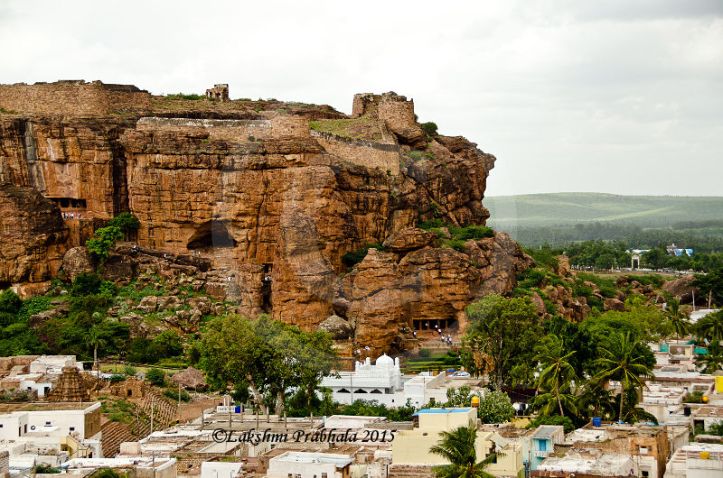
Badami, formerly known as Vatapi, was the capital of the Badami Chalukyas from 540 to 757 AD and is famous for rock cut and other structural temples. The Badami cave temples are picturesquely set at the opening of a ravine between two rocky hills. All the cave temples are carved out of sandstone on the rocky face of a hill that overlooks the reservoir Agastya Lake (which has its banks dotted with more temples). While Badami is most famous for the cave temples, the fort and other groups of temples, it is also surrounded by many pre-historic places like Sidlaphadi and Kutkankeri where one can see the rock shelters, megalithic burial sites and paintings.
There are a total of four caves with splendid carvings of the Hindu Gods that are bound to leave you awe-struck.
Cave 1: Climbing up to the first cave is quite easy with 40 odd steps to reach the mukha mandapam or the main verandah. It is made of red sandstone and was probably the first to be carved in 578 AD. The hall comprises of numerous pillars and a square shaped sanctum in the backwall.
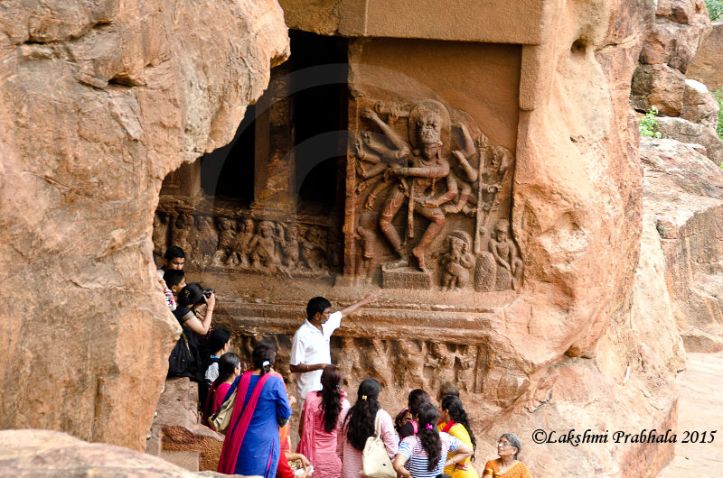
The most attractive feature of the cave however is the portrayal of Lord Shiva with 18 arms towards the right of the cave entrance. Some arms depict beautiful dance postures while others have weapons like drums, trident, axe etc. Serpents are coiled around a few of them.
Cave 2:

A flight of nearly 64 steps will lead to the second cave. This cave is dedicated to Lord Vishnu and has a panel of Vishnu in the Varaha(boar) avatar holding Bhoodevi to the left and Trivikrama or the Vamana avatar to the right.
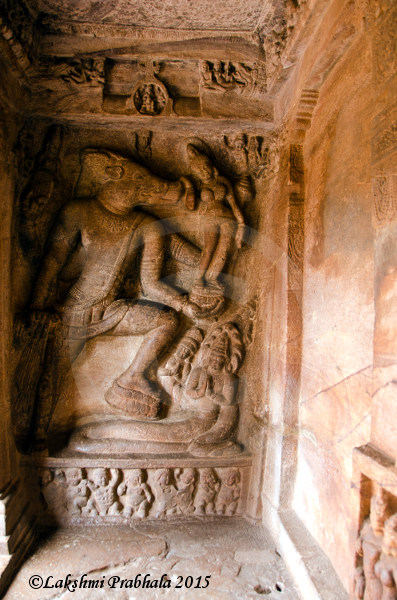
The ceilings here are decorative with a panel of a wheel with sixteen fish spokes in a square frame and another comprising of flying couples in corners with swastikas between them.
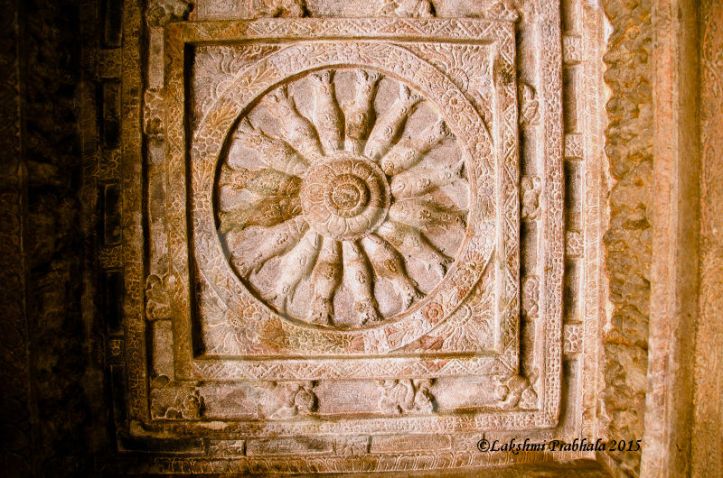
Cave 3:
Going further up by another 60 steps would take one to the cave 3. Cave 3 is by far the biggest and the most majestic of the 4 caves. It has splendid 4m tall reliefs (mostly) of Vishnu which are depicted with a robust physique and great exuberance. Inscriptions found in the cave (in Kannada) reveal that the shrine has been created by the Chalukyan king Mangalesha in 578 AD..
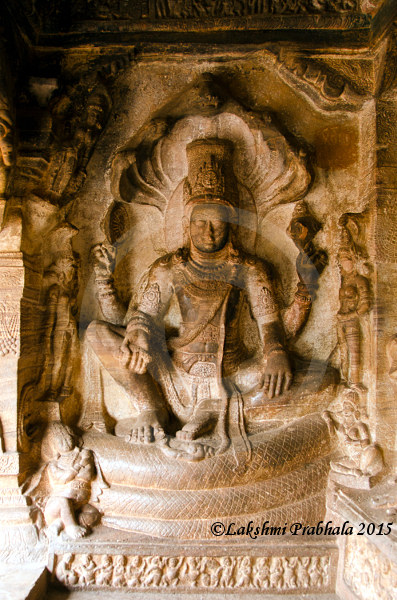
Lord Vishnu is depicted in a variety of postures and avatars – standing, seated on a serpent, in Narasimha avatar (half human – half lion), and Trivikrama(or Vamana avatar as a dwarf with one foot on the Earth and another towards the sky). Very few traces of colour can be seen on the ceiling, perhaps indicating presence of paintings. Bracket figures on the piers are very attractive making this the most ornately decorated cave.
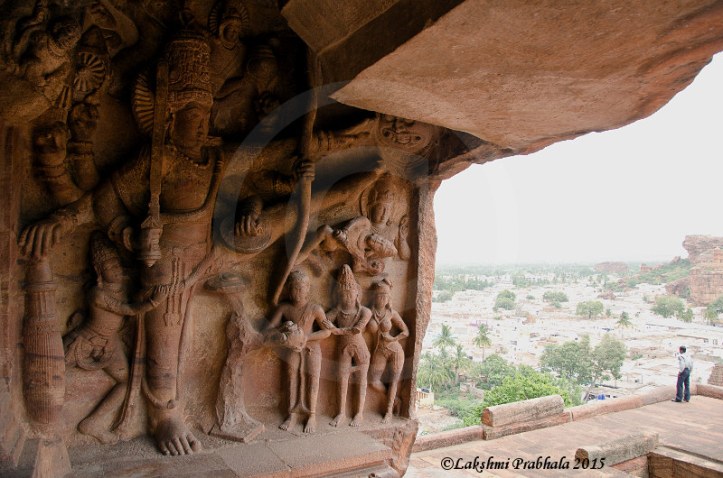
Cave 4:
The fourth cave is a dedicated to Jainism and perhaps the most recent construction. It stands as the only Jain monument of early Chalukya period. Even though it is much smaller than other caves, it is beautiful and rich with decoration. It is located higher than other caves with images of Mahavira painted on the backwall. Many Jain Thirthankara images have been engraved in the inner pillars and walls. The sanctum is adorned by the image of Mahavira.
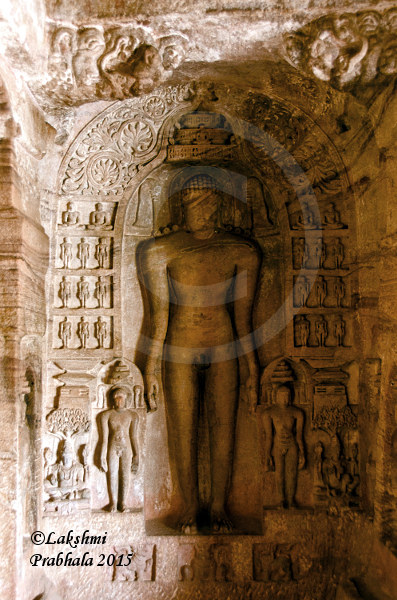

After taking in the art and architecture and all the wonderful views these elevated vantage points gave us, we headed down to go to the other side of the Agastya lake – the Badami Fort.
[…] town of Aihole came towards the end of our trip, but historically it preceded both Badami as well as Pattadkal. The Badami Chalukya architecture was a temple building idiom that […]
[…] time, our initial plan was to drive down to one or two temple towns of the Chalukyan era – Badami, Pattadkal or Aihole. But from a practical stand point, it meant we would spend more time on road […]